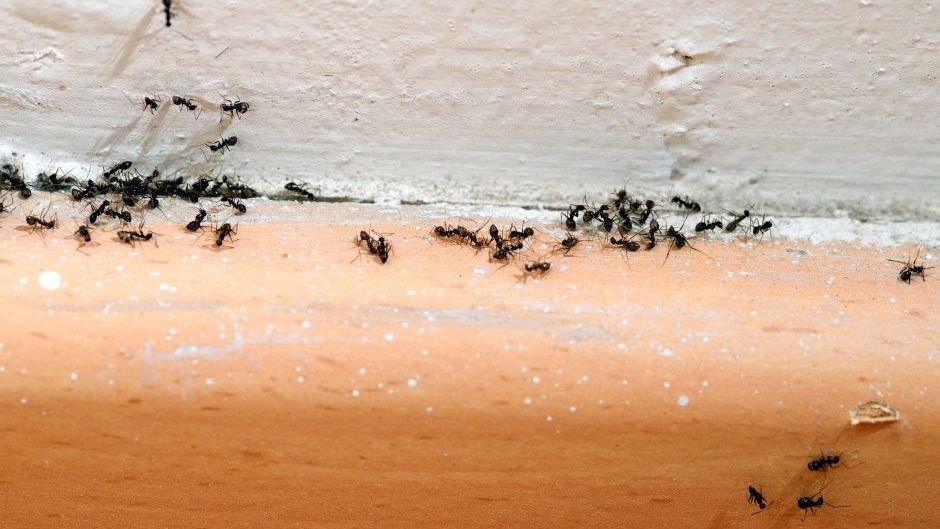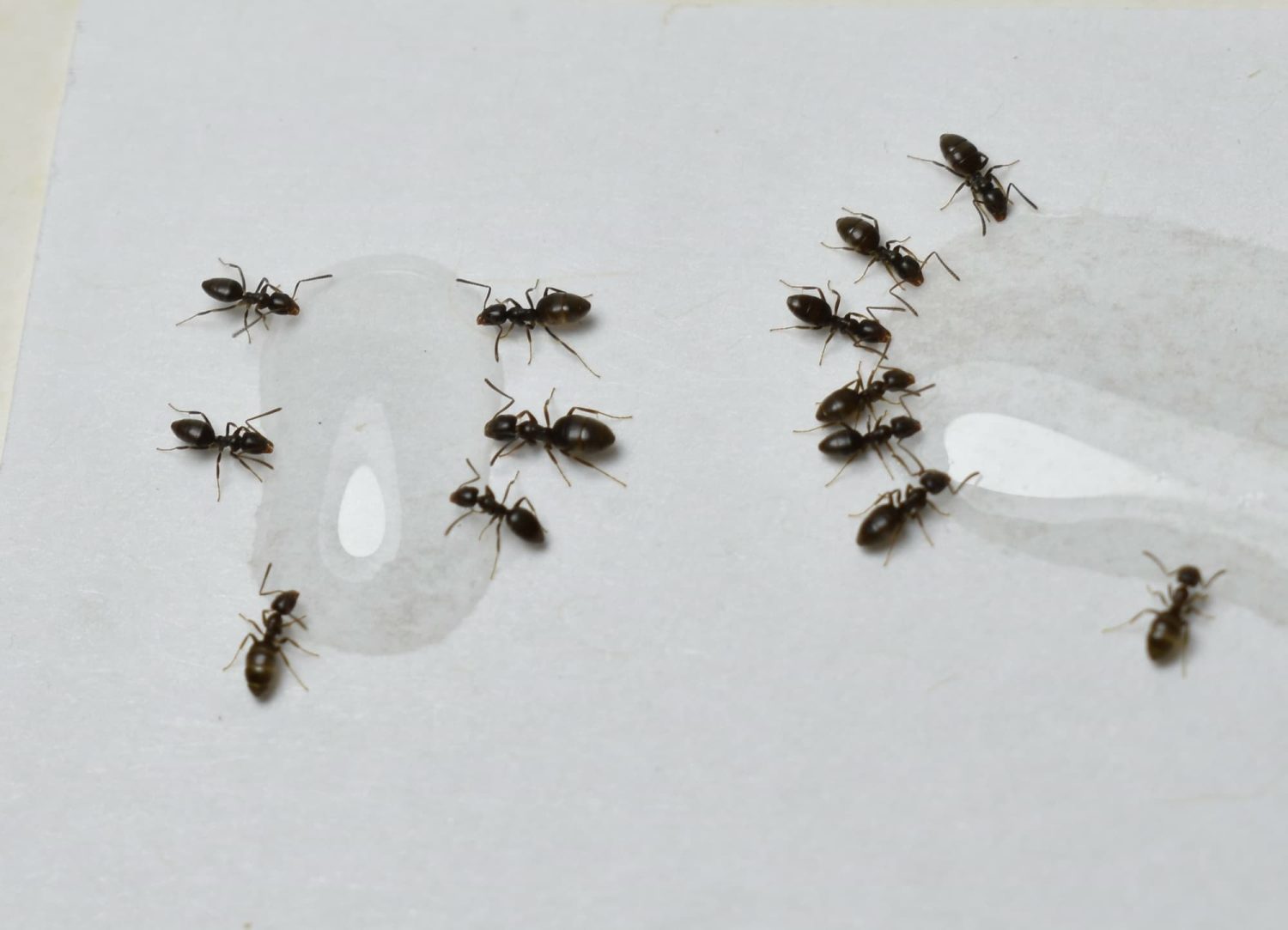About the Odorous House Ant
You may know the Odorous House ant by another name, like the sugar, stink, or coconut ant. Rightfully named, they are known for their love of sugar and foul scent released when crushed.
The Odorous House ant will often make its way inside your home to escape the rain outdoors. However, they can become all too comfortable when they find an abundance of accessible sugary foods and moisture.
In this article, James River Pest Solutions provides everything the Virginia homeowner needs to know about the tiny, dark ants creeping around your home. Plus, we share our expert tips on preventing the pests from infesting your property.
Appearance
This smelly ant is one of the easiest to identify among the common household ant species. The Odorous House ant is significantly smaller than others. And their dark appearance further sets them apart.
You can use the following physical traits to correctly identify the Odorous House ant:
- 1/16 to 1/8 inches long
- Deep brown or black color
- Six legs
- Antennae

Behavior
When the ant is crushed, it releases a distinctive smell, hence their common name- Odorous House ants. People have described the scent in many ways, with the most common associations being:
- Rotten coconut
- Blue cheese
- Strong pine
In the winter, these ants will typically remain in one nesting location. But when the weather warms and food is bountiful, they will make multiple nests spread out across their territory. Furthermore, they are more active in the spring and summer overall. This makes the Odorous House ant one of the several species you’ll want to watch for in the coming months.
However, these stench-releasing ants aren’t a danger to you and your family. They surely invade homes and raid pantry foods. And they do bite but do not sting.
PestWorld.org describes the potential threat of the Odorous House ant as follows:
“Odorous house ants do not pose a public health risk, but they can contaminate food and should be avoided. If you notice odorous ants on your property, contact an ant pest control specialist.”
Diet
As mentioned before, you may know the Odorous House ant better as the sugar ant. And this is not for no reason. These ants are excellent scavengers and are highly attracted to household foods packed with sugar. But they also feed on other insects and collect honeydew from aphids.
Odorous House ants are on the hunt, day or night, searching for food to bring back to their colony. They follow trails established with a distinctive scent and are seen marching in single file lines.

Habitat
This unique ant populates indoor and outdoor areas from southern Canada to northern Mexico. Their vast range is partly due to their high resilience to both hot and cold temperatures.
The only external condition they seem not to like is the rain. However, they manage to find a way around that, too. In fact, Odorous House ants will often move their nests in response to rainfall or in anticipation of it. This frequent moving of their home and colony is also an effort to stay close to food sources.
Inside the home, you’ll likely find them foraging for treats in the pantry and kitchen area. They have also been commonly spotted in the walls, insulation, bathrooms, and window frames.
Outdoors, they may nest just about anywhere, including the following areas:
- Under rocks
- Beneath logs
- Inside the nests of birds or mammals
Do You Have an Odorous House Ant Infestation?
These tiny ants may seem harmless. And in many ways, they truly are. But they are undoubtedly unwelcome in your home and can ruin pantry foods in little to no time at all. Odorous House ants are considered nuisance pests, not dangerous ones. Nevertheless, they are challenging to control and keep out of the home.
Preventing Odorous House Ants
Fortunately, there are several things you and your family can do to keep the pests out. However, remember that their tiny size and quick movements can help them invade a home, no matter how hard you work to seal them out.
Still, it’s certainly worth your time to adopt the following prevention measures for the Odorous House ant. Plus, many of these tips and tricks will help you avoid other insect infestations.
- Trim back trees and shrubs in your yard.
- Store food, indoors or outdoors, in tightly sealed containers.
- Keep countertops and other surfaces clean.
- Pick up your pet’s food and water bowls after they have finished their meal.
- Eliminate any standing water outside.
- Seal gaps and cracks in your home’s structure.
Get Rid of Odorous House Ants with James River
As with most home-invading pests, you want to act quickly to avoid an overwhelming infestation. And that’s precisely what James River is here for.
If you’re looking for quick and effective Odorous House ant removal, call James River Pest Solutions as soon as you suspect these pesky critters in your home. Or better yet, if your yard is crawling with the tiny, dark ants, reach out to us today.
Indoor infestations often start with outdoor ones. Get the problem under control before it gets any worse with the help of our experienced and friendly team.
